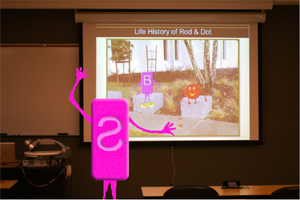|
||||||
| Working in groups of 2 or 3, you will determine the source of an outbreak and report your findings in a scientific presentation.
• Number of slides. A 10--minute presentation may consist of 10 slides. A good presentation includes just enough slides to get across main points without bombarding the audience with information or useful slides. • Slide format. Use a sans serif font such as Arial. Text should be no smaller than 18 point. Use good contrast between text and the background. Reference citations go at the bottom of the slide they're used and can be 14 pt. • Slide content. Slides should be varied: include images, data, and bulleted lists • A proper introduction. Start off the presentation with your title slide and introducing the topic as well as yourself and any other speakers. • Conclusions. Make sure to review major points on one slide and include a final slide that opens the door for comments. • Don’t use full sentences. Keep all points under five words (short phrases). If the topic can be presented by simply reading the slides verbatim, the slides contain way too much text. Cut down on text and move extra info down into speaker notes. The bullet points should be prompts more than anything else. • Have a focused message. Slides should flow logically from one to the next. A presentation with multiple purposes can become confusing for the audience, not to mention difficult to write. Keep the presentation focused on a central idea and drive home the point with concrete opening and closing slides as well as logical arguments throughout. • Consider the audience. A presentation should be appropriate for the intended audience. Spend less time covering background information and focus on facts. Include references, data, unique viewpoints. • Presentation. No costumes and no food. This is a professional M & M. Best Tips for Getting a Good Grade on a PowerPoint
Presentation
•
References. Peer groups of researchers, scholars and professionals within a specific discipline are the audience for scholarly literature. Scholarly and professional journals are peer reviewed. Peer review is a well-accepted indicator of quality scholarship. It is the process by which an author's peers read a paper submitted for publication. A number of recognized researchers in the field evaluate a manuscript and recommend its publication, revision, or rejection. Articles accepted for publication through a peer review process implicitly meet the discipline's expected standards of expertise. Read more about scholarly journals.
|

